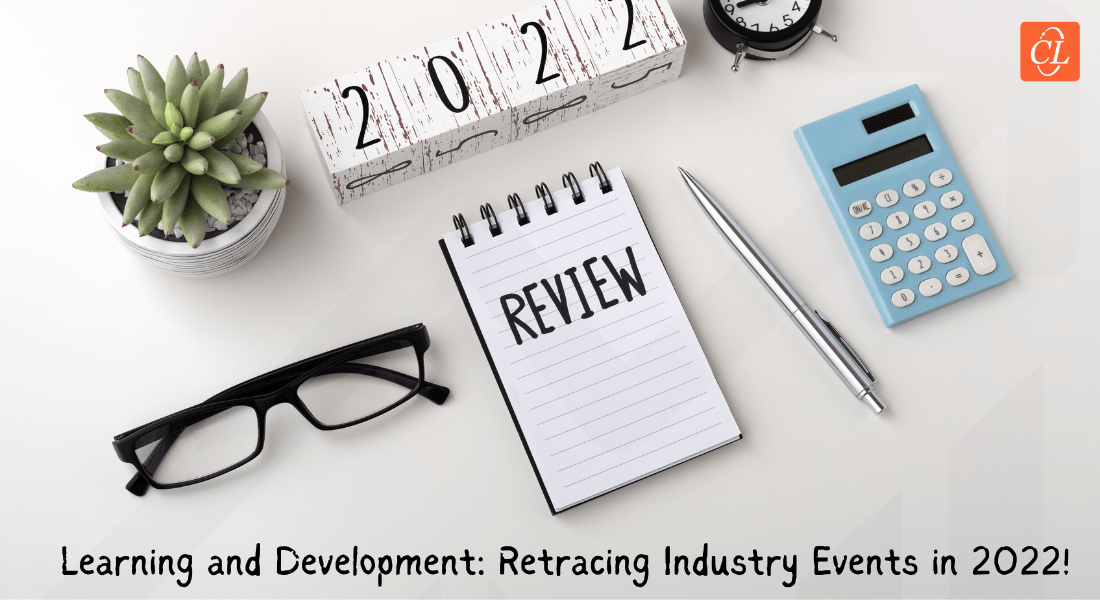L&D in 2022: A Year in Review

Two months down in 2023 and the days bygone push me back to thinking about the recent changes that happened, especially in 2022! With this article, let me take you through some of the major happenings in the learning and development (L&D) industry in 2022.
Wondering how 2022 Contributed to the Raise of L&D?
Here are a few events that occurred in the year –
- Increase in the Industry’s Worth
- Boost in eLearning Adoption
- Growth in the Need for eLearning Translations and Localization
- Surge in the use of Video Content for Training
- Rise of VR Adoption in Training
The first thing that I would like to put out there is that the L&D industry is
“…worth $1 trillion dollars and is still growing”
As per Workplace learning and development report published by Statista Research Department, in 2022, the learning and development industry was estimated $1 trillion dollars and the value is still growing.
The stat highlights at the major evolution of the industry. With the massive changes in the world of businesses, and also the world in general, the focus on L&D and employee development has grown more than ever. Organizations, which placed some amount of emphasis on L&D, have started considering it as an important function contributing towards organizational growth.
Organizations of all sizes have started focusing more on learning and development opportunities to ensure that their employees are more productive at work. And in return, the employees feel more gratified towards the employers for being more invested in their careers and growth.
Triggered with this growth, L&D professionals started emphasizing more on eLearning adoption. Considering the flexibility and the efficiency it brings to employee training, organizations have also been quick to adopt it.
“… in 2022, 90% companies eLearning showed an inclination towards eLearning adoption”
According to a McKinsey report, only 10% of companies were using eLearning platforms to deliver their training, in 2012. A decade later i.e., by 2022, that number had increased to 90%. eLearning platform providers have become big business. The rise of eLearning has been driven by the need for more flexible and cost-effective training solutions. Companies can now offer their employees training on any device, at any time and from anywhere in the world.
This very increase has also brought forward the need for quick rollouts of eLearning modules! Increased need for effective eLearning solutions, and the need to revamp existing eLearning modules because the older versions of software which they were developed on were now obsolete, and the need for frequent updates to the learning modules had led to the rise in the popularity of rapid eLearning design and development.
According to L&D professionals, rapid eLearning design and development, which mimics the modern software development approach, and prioritizes speed over perfection. But with that said, there is absolutely no compromise on the quality! Exploiting advanced eLearning authoring tools, the rapid eLearning design and development ensures that the eLearning solutions are rolled out within a matter of weeks and that too without compromising on the quality of the solution. Plus, the authoring tools help ensure that the eLearning courses have enough interactivities and engaging elements so the learners remain hooked to the training being delivered.
→ Sign Up For LearnFlux Now
Another major event that we could see in 2022 was the increase in the
“need to go global while also staying local”
The need for being globally local is yet another trend that gained traction in 2022. Though globalization has been around for quite some time now, the need for being global while retaining the local flavor had become an important aspect of personalization.
Speaking in the terms of learning and development, this highlights the growing need for eLearning translations and localization of learning content. Diversity of the workforce has led to increase in the demand for eLearning translations. At the same time, learner preferences and interactivity levels when the content delivered is contextually relevant has brought more attention to eLearning localization.
We’ve also seen a huge increase in the use of video for training. A report from Research.com shows that by 2022, 70% organizations prefer using video for training. Video provides a more engaging and immersive learning experience than traditional methods like text-based courses or PowerPoint presentations. It’s also much easier to create and distribute video content than it was 10 years ago. Thanks to advances in technology, businesses can now produce high-quality video content without breaking the bank.
Another big change we’ve seen is the move from face-to-face training to virtual reality (VR) training. In 2012, only 2% of companies were using VR for training purposes. By 2022, that number had increased to 30%. VR allows trainees to get a realistic experience of what they’ll be dealing with in their job without actually having to do it for real. This helps to make sure they’re fully prepared for everything they might encounter on the job. It also reduces the risk damage to equipment during training sessions.
Wrapping Up
Overall, we’ve seen some amazing changes in the learning and development industry over the last 10 years. The rise of eLearning and video has made training more accessible and engaging than ever before, while VR is giving trainees a realistic taste of what they can expect when they start work. These changes are sure to continue in the coming years as businesses look for ever more innovative ways to train their employees.
Want to explore more and understand the state of learning, the latest trends and the technologies that you need to stay up to date with what’s happening in the industry? Then Learn Flux is the event for you!
This three-day virtual event from March 21 to 23 will give you access to 10+ live workshops from industry leaders! And let’s not forget the eLearning Champion’s Swag Box… sign up now!





